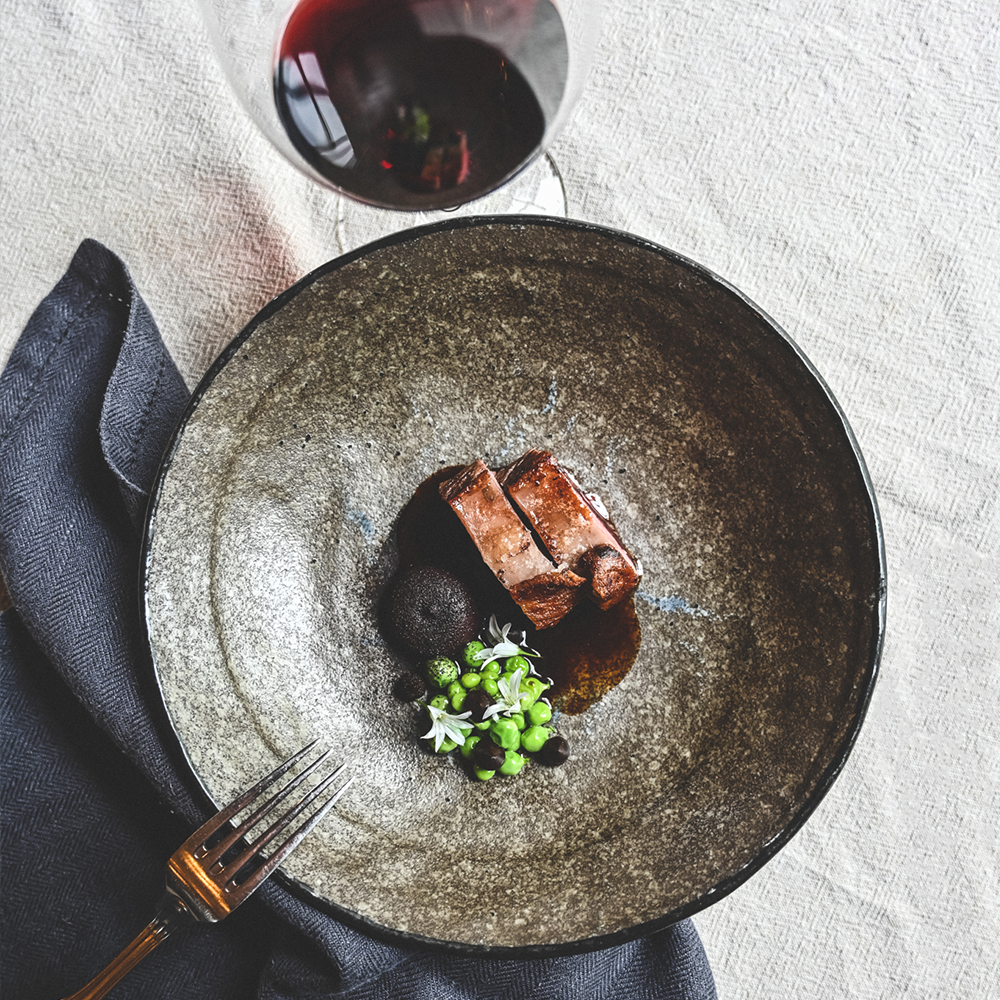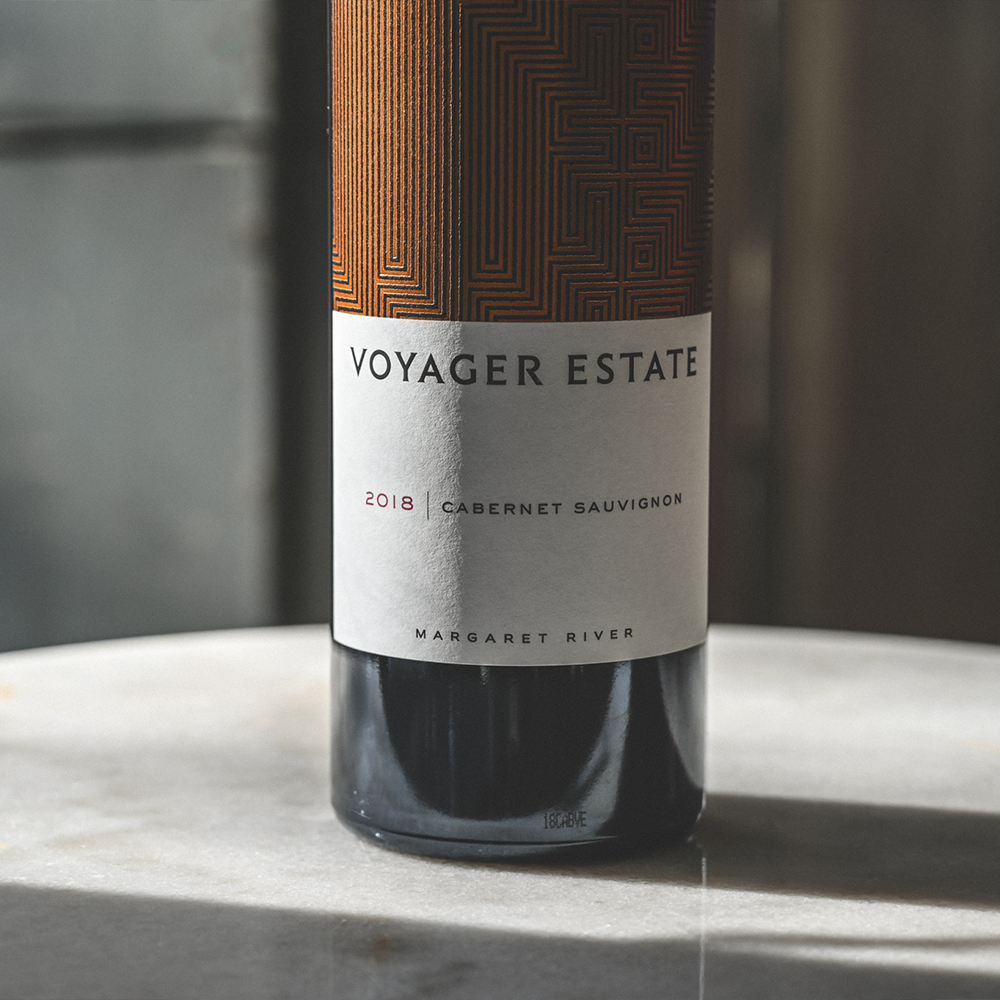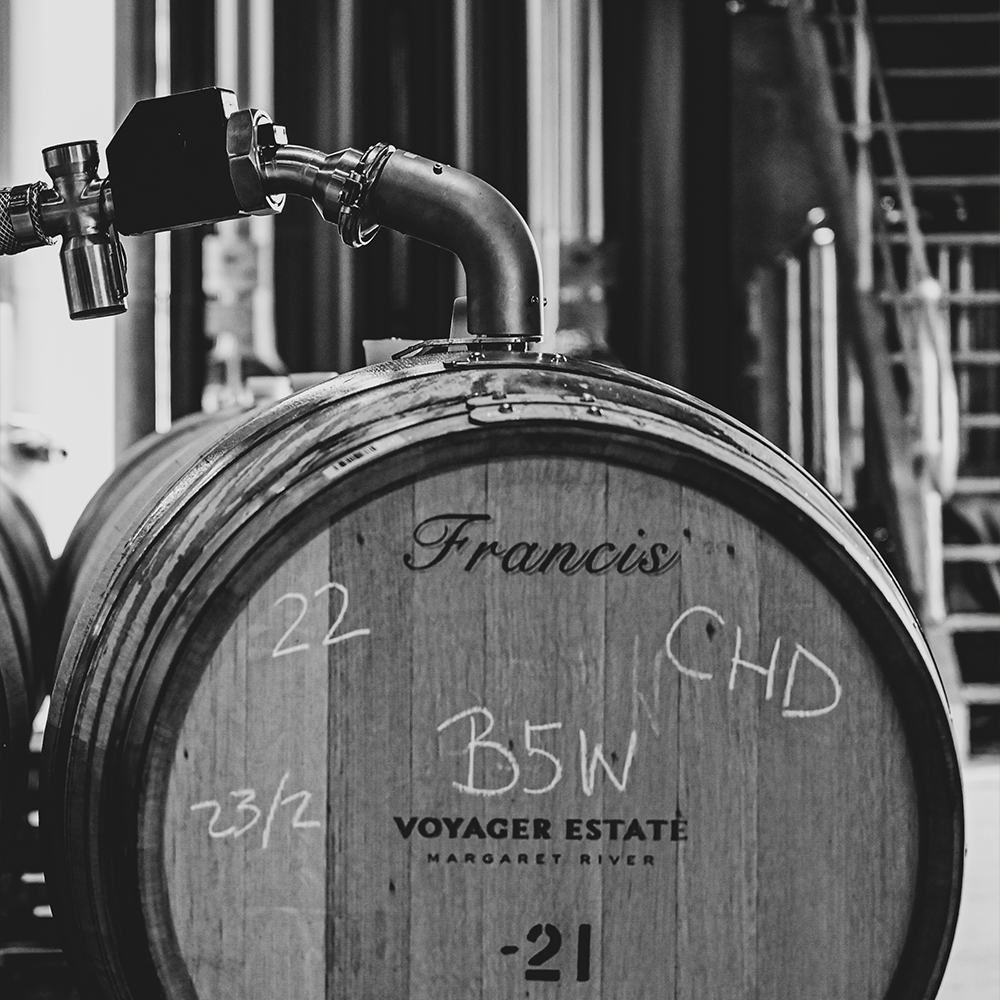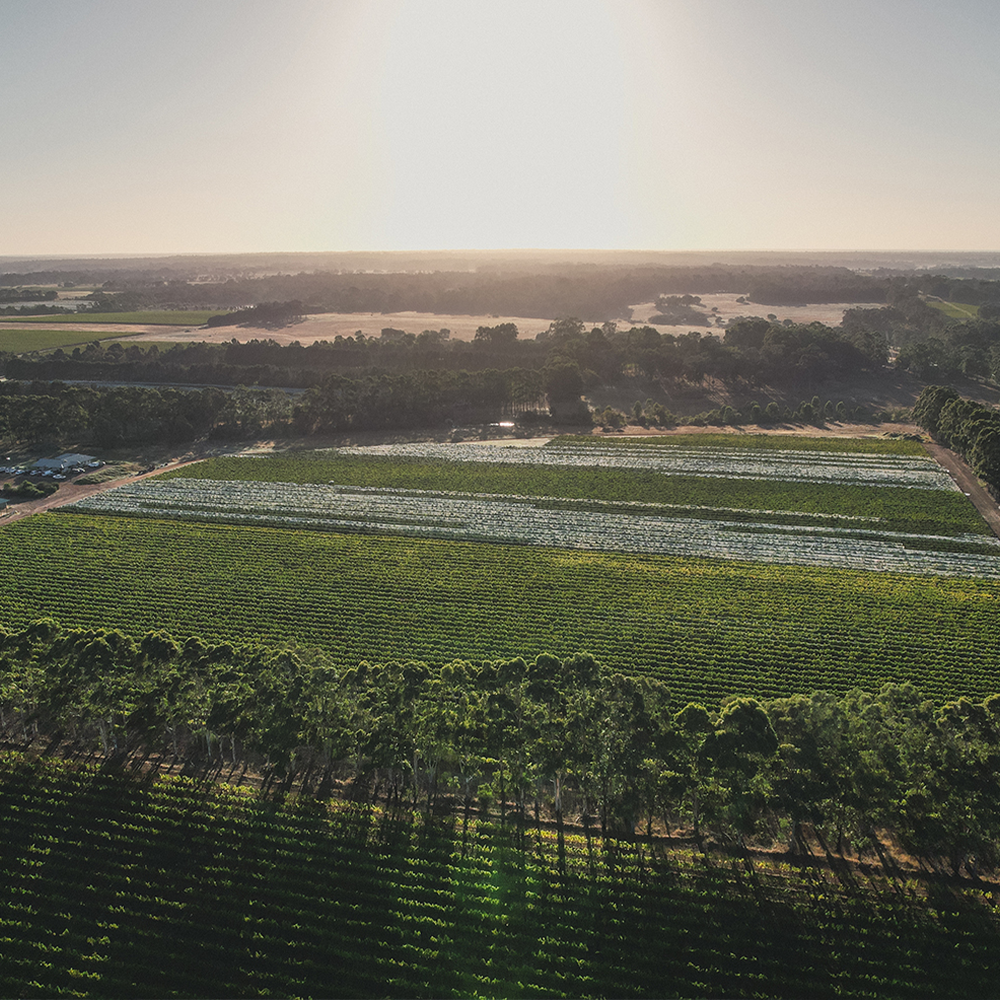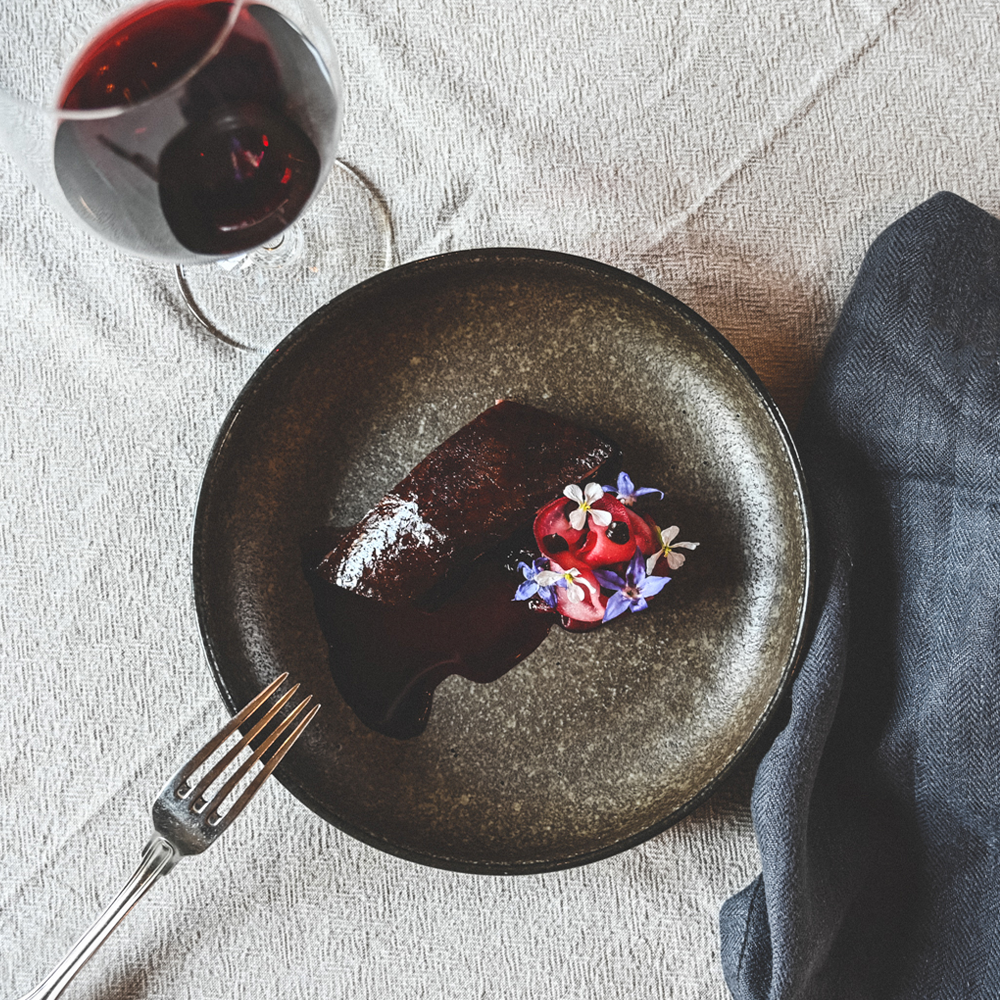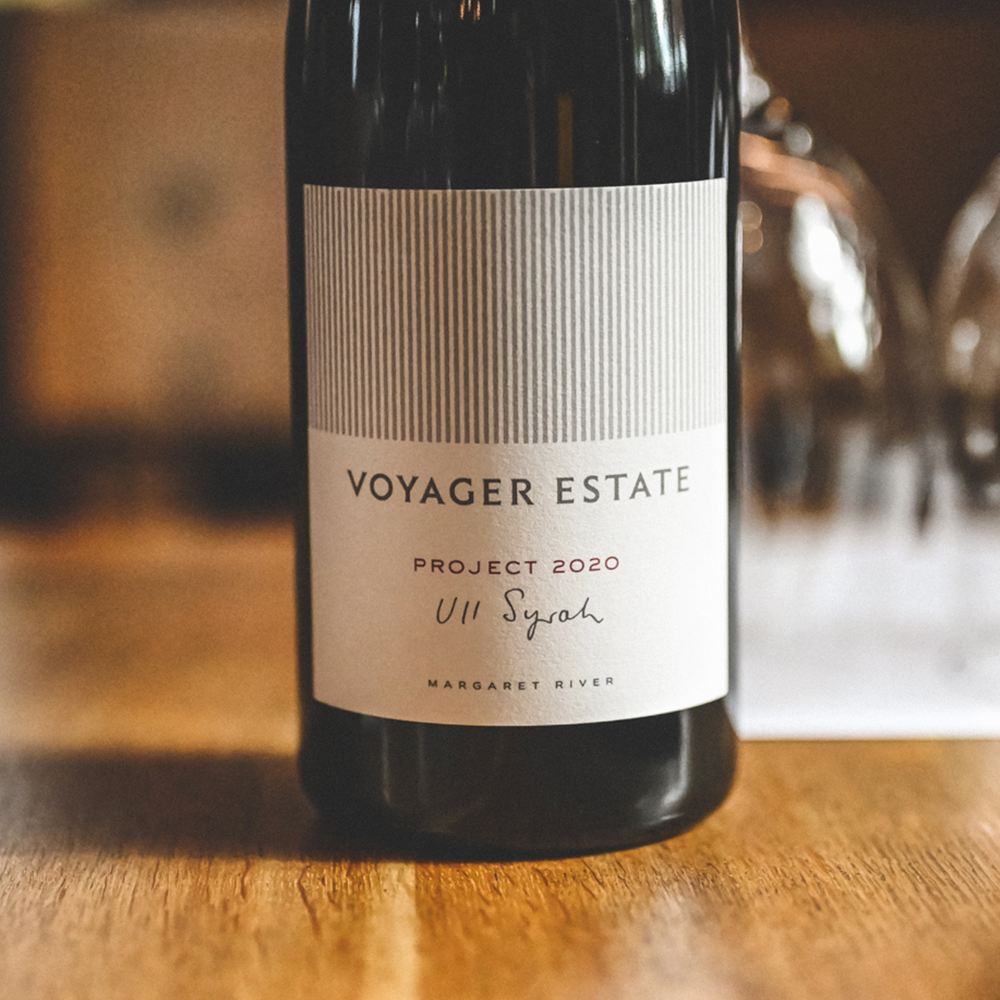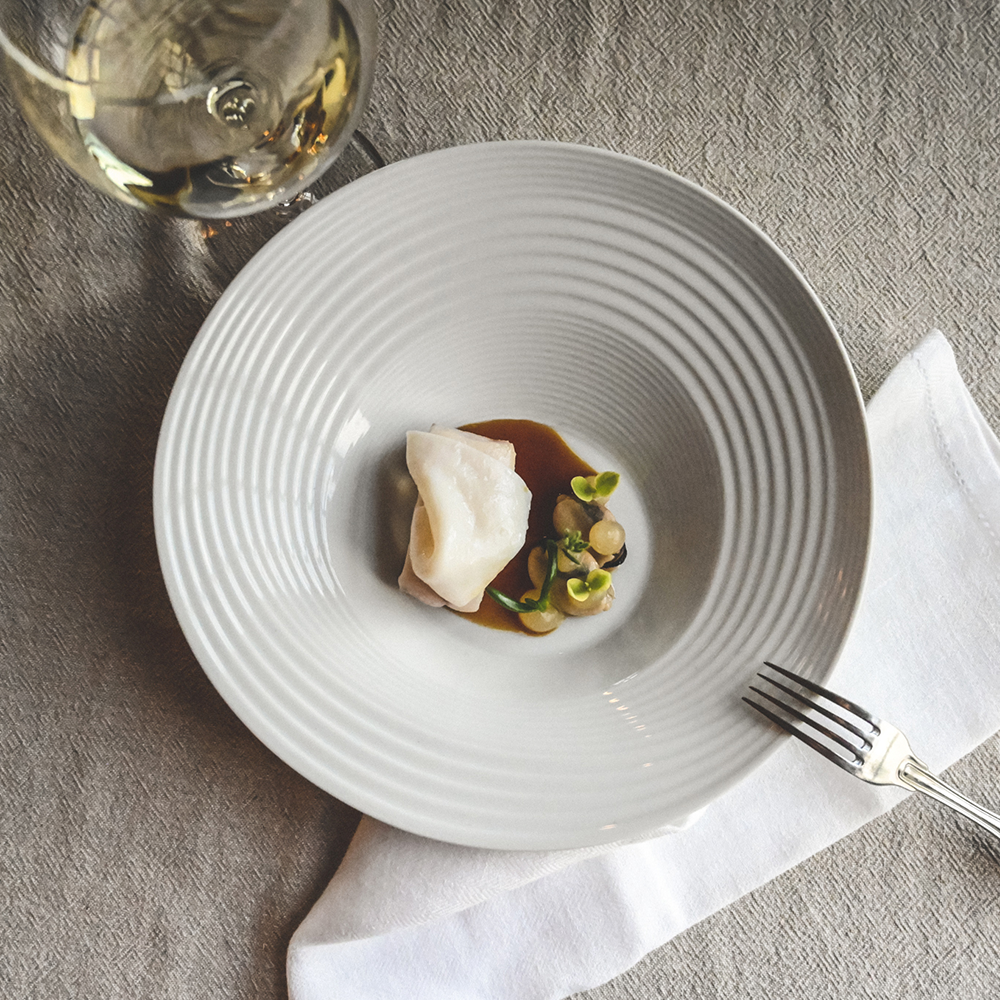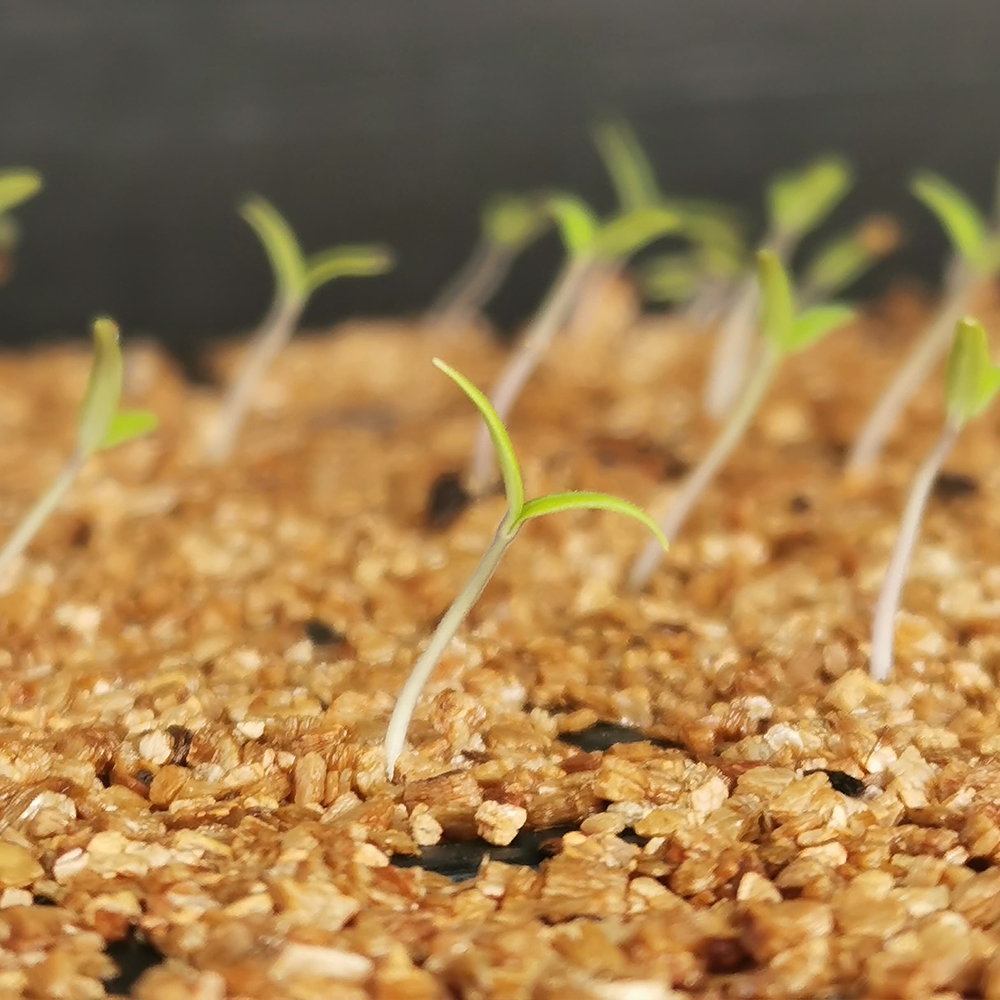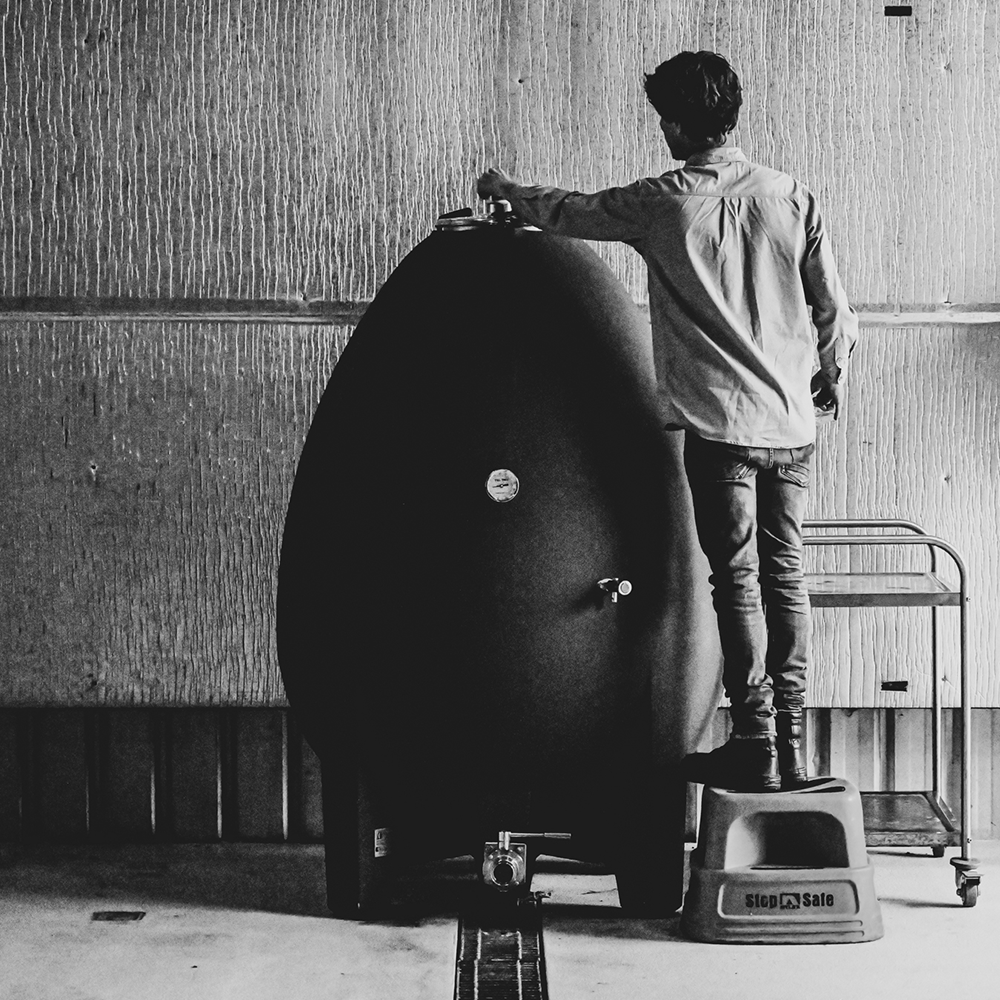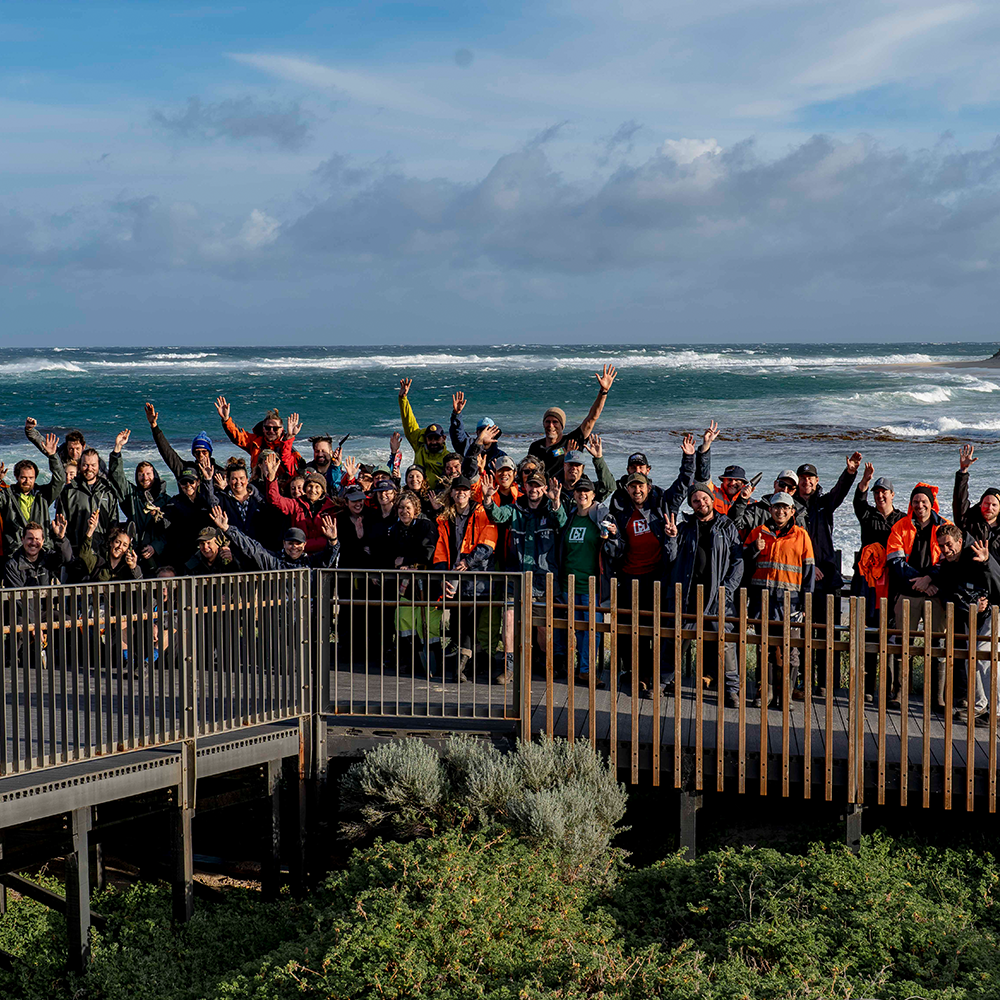Blog
FLORIS
The arrival of spring signals bud break, vigorous growth, and flowering – the vineyard breathes and bursts with new life. Buds form into leaves and tendrils, then finally, the first tiny flowers start to appear on the vines.
Bees, lacewings, spiders, and ladybirds move quietly through the foliage, enriching our land’s precious biodiversity. Colourful cover crops begin to bloom, competing for water and balancing soil moisture following the region’s heavy winter rains. Eventually they decay and the lifecycle feeds nutrients back into the ground.
This time of youthful abundance inspires our new seasonal menu, FLORIS [Latin: flower], featuring our take on a succulent spring classic – Jindong lamb back strap, peas, and carrots.
The lamb back strap is sous-vide with a combination of peppercorns, bay leaf and thyme, seared fat side down until caramelised, then placed in the oven, basted with butter, and finished on the hibachi grill. A silky purée is created from purple carrots, which have been sous-vide with butter and miso and then blended with beetroot, lemon, and locust bean.
The lamb is served on top of the purée, alongside locally sourced spring peas and broad beans compressed with pepper berry oil, and a black garlic gel. The dish is garnished with a lamb jus that has been caramelised and infused over eight hours.
Chef Ray Van Puymbroeck and Sommelier Claire Tonon have chosen to pair this spring dish to our flight of three Cabernets, creating a complex flavour journey.
“Umami character abounds, pulling these three wines into line and accentuating their structure. This is balanced by the light acidity of the black garlic gel and powder, which emphasises the pristine fruit. Herb and spice notes echo and balance those same characters in the wine. There’s also a toasted character to the dish that helps to bring through any subtle oak.
My recommendation – taste the lamb and jus alone with the 2020 Girt by Sea, then add the garlic and greens with the 2020 Modern, and take a whole mouthful of everything to match the structure and intensity of the 2018 Cabernet!” says Claire.
Immerse yourself in the flavours of spring – book your FLORIS degustation experience here.
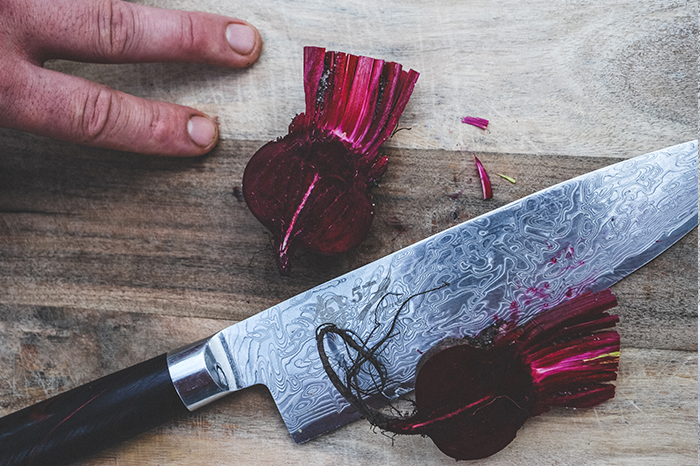
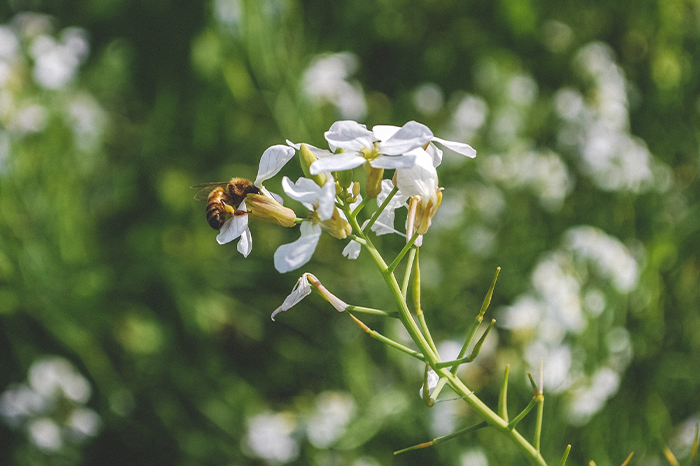
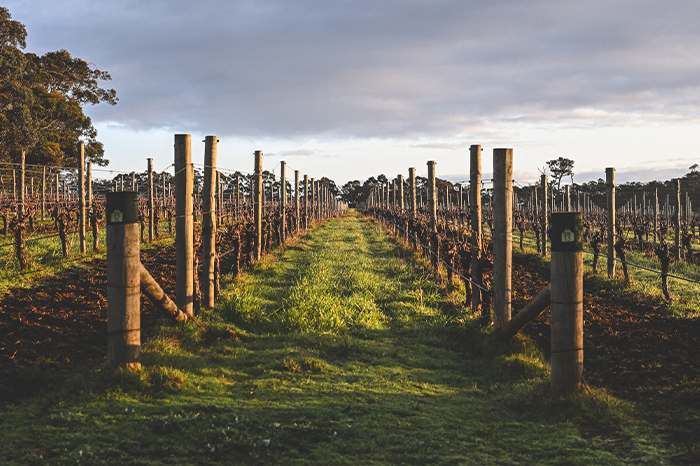
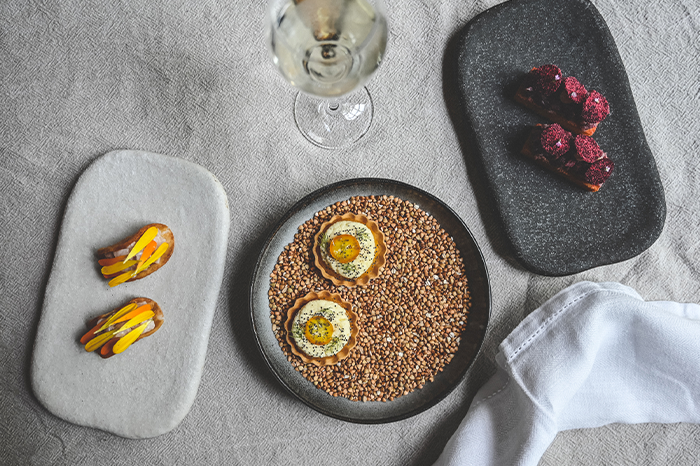
THE GOLDEN YEAR
The 2018 vintage had the region abuzz with excitement and is widely touted as being one of our best seasons on record. Winemaker and Winery Manager, Travis Lemm, dives a little deeper into how the stars aligned to produce some of Margaret River's most exceptional Cabernet.
“You will not find many producers in Margaret River that don’t consider the 2018 vintage extraordinary!
We had early budburst across the region and a warm November, before experiencing some wet conditions in December that bolstered soil moisture. From there, the season progressed steadily, enabling quite slow ripening across varieties. Highly advantageous, as the fruit flavours accumulate nicely without an acceleration in overall sugar levels, which leads to perfect balance!
Through March and early April, we had amazingly sunny days and cool nights, which held the acidity in the grapes, concentrated flavours, and developed perfect tannins in our Cabernet Sauvignon.
There was no rush to harvest. We tasted early tannin ripeness in the fruit and then had the luxury to wait until we considered the flavour concentrations to be at their peak before picking. In the winery, all the ferments behaved as the fruit was in stunning condition. We progressed to some extended skin contact on a couple of parcels from North Block, which allowed more extraction of soft powdery tannins in the wines.
This was the type of season where we looked at the wines and knew they were going to be special. For me, if the balance of fruit concentration and tannin is there at six months of age in barrel, the wine is going to be exceptionally strong.
Blending our 2018 Voyager Estate Cabernet Sauvignon and 2018 MJW Cabernet Sauvignon was an easy process. Old Block, North Block and their relevant parcels had the perfect fruit structure and tannin depth.
The MJW Cabernet is crafted to retain delicacy and purity, so the 2018 release is more dominant in Old Block which has a rich fruit profile. By comparison, our Voyager Estate Cabernet is our legacy in a glass, possessing tannin definition supported by classic cassis, so it holds more North Block fruit at its core.
Overall, it was a fantastic season, and the results are in the glass! Both these Cabernets express elegance, power and stunning fruit character, reflective of a truly standout year in the history of Margaret River."
OAK & VINE
Throughout history, the oak barrel was mostly used for practical purposes, transporting wine from one place to another. Somewhere along the journey, a discovery was made – the barrels were imparting flavours and characters into the liquid gold sloshing around inside. Fast forward to today and we have modern winemaking, with oak barrel selection an often critical component of the craft.
At Voyager Estate, we maintain a select core team of sustainably farmed oak suppliers and barrel coopers who we work with regularly, but we are always experimenting with the different variables – forest selection of oak, stave seasoning and barrel toasting profiles – to ensure a constantly evolving program.
Winemaker and Winery Manager, Travis Lemm, is incredibly passionate about curating the right oak profile for each of our wines. “Oak, like wine, is sourced from specific land with its own unique micro-climate, weather variation, and soil – meaning it is an expression of place that can impart different characters. We work with a complex combination of oak and toasting levels to impart just the right amount of influence, without overpowering our pristine fruit."
There is no better example of where this process comes into play than with our prized Chardonnay blocks. The team works to match the oak to the different Chardonnay clones grown on the Estate, each with their own unique characteristics, to craft our expressive cuvees.
“The classic Margaret River Gin Gin clone always has powerful fruit, tight acidity, and great length, so we select oak that is seasoned and toasted to support these attributes – for example, we like to accentuate that length and keep those pristine fruit flavours at the front of the palate. The barrel also provides mid-palate richness," says Travis. “Clone 95 is a different prospect. It can be a little more subtle and citrus-toned, and, as we often utilise malolactic fermentation to soften the natural acidity, we are looking for oak that provides length and richness, rather than upfront oak flavour that may dominate the delicacy of the wine.”
Cabernet also has an array of fruit characters and tannin profiles that should be supported, not dominated, by oak. Different Cabernet expressions often require a variation in choice of oak, from the grain size of the timber, to stave thickness and toast levels.
This complex process of ‘match-making’ often involves working directly with coopers to develop barrels to suit the specific blocks. Coopers are masters of their craft and know how to achieve a particular style from their own oak selections when making barrels. This allows consistency of expression from year to year, which is an important factor for winemakers, as it helps mitigate the differences in wine style that can come from seasonal climate variance.
“We develop close working relationships with our coopers over time, to refine the style of oak used as our vineyards age and the subtleties of the season add to our knowledge base," Travis continues. “Wines may be matured in barrel for a few months or even years, so the choice of oak is critical. As organically certified growers and makers of wine, we do not add fining agents, thus we only work with high quality materials. We cannot have any 'sharp' edges or rough tannin profiles imparted to the wine, that may take away from its sense of place.”
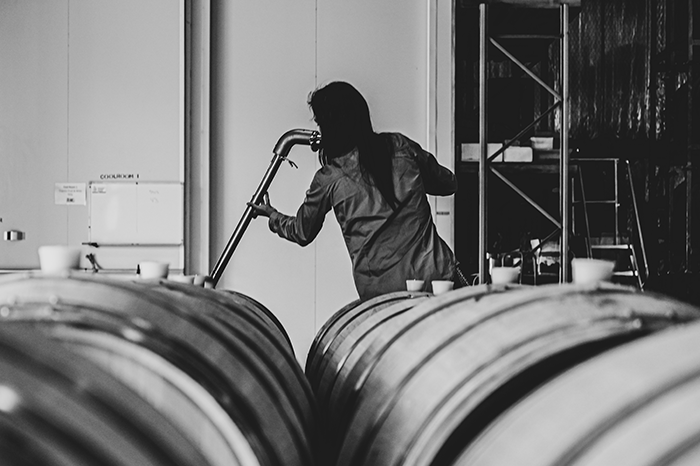
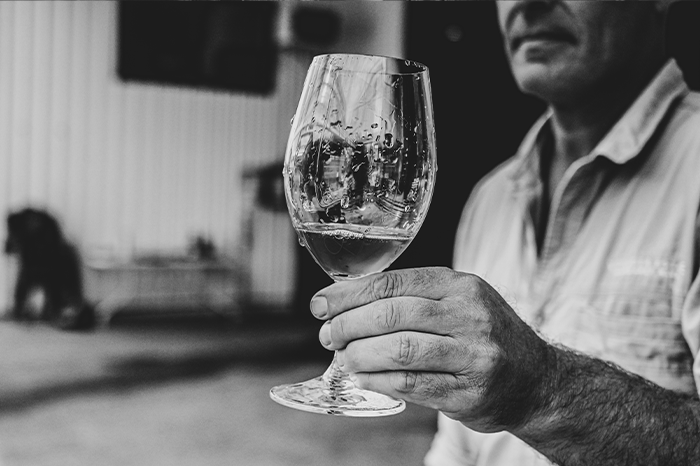
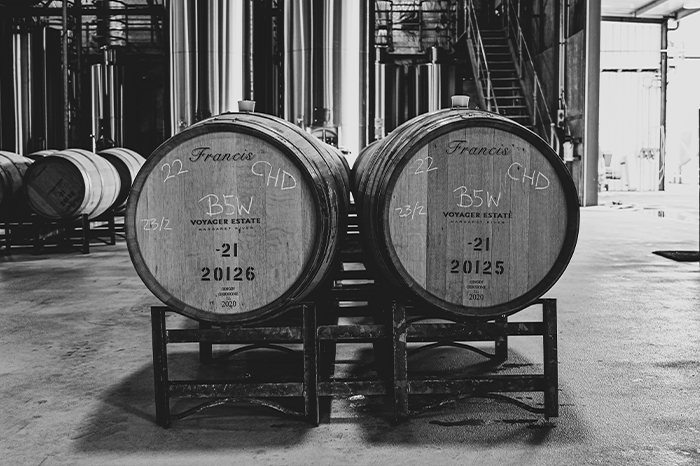
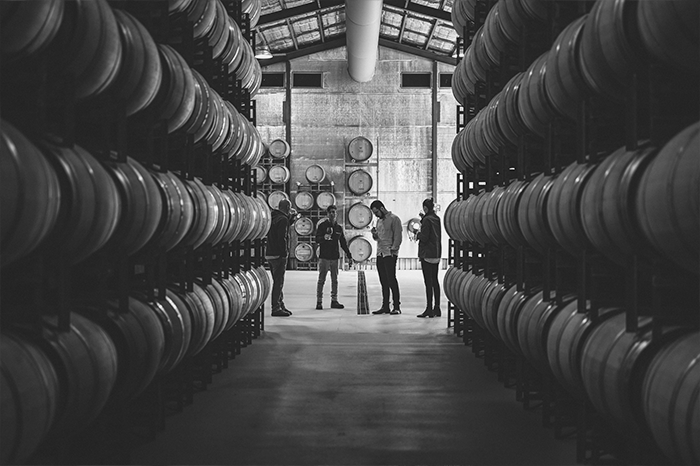
PROTECTING BOODJIDUP BROOK
It’s been over 15 years since Voyager Estate first recognised the need to protect and improve the health of the Boodjidup Brook catchment area.
The Boodjidup Brook and its tributaries run right through our Estate, entering and exiting at multiple locations. Maintenance of the riparian zones (the area where the water meets the land) is vital to prevent erosion, increase biodiversity, and ensure water quality.
An action plan released by the Cape to Cape Catchments Group back in 2009 provided various recommendations on how we could enhance and restore the existing natural environment, including building fences, weed management, installation of vegetation ‘buffers’ using local species, and controlling erosion.
The team took these recommendations and got to work! Each riparian zone was mapped out with its own unique staged action plan, depending on the level of degradation and restoration that was needed. They prepared the site for planting by ripping and mounding the soil and removing weeds where necessary (nightshade, thistle, reeds, and bridal creeper just to name a few).
As the business evolved on the pathway to organic certification, in a bid to outcompete weeds without herbicide use, they also increased our tree planting density. Based on suitability to soil type and moisture content, native species were carefully selected including marri, wattle, banksia, blackbutt and kangaroo paw. Fencing was installed to keep grazing livestock from eating the precious new seedlings. The team further combatted erosion with the placement of rocks in the water channels. This created ‘rock pitches’ to slow water flow through these areas, stabilise banks and allow new plants to establish.
Previously, Weightmans Dam was an eroded and overgrazed sheep paddock. Dry and dusty in summer and boggy pools of water in winter. When the dam build was completed in 2017, more than 20,000 native species were planted around it, creating an aquatic habitat, controlling water flow, and stabilising the natural environment.
Since commencing the revegetation project all those years ago, more than 60,000 native species have been planted across our property – an amazing achievement. We now monitor and maintain the rehabilitated areas through ongoing livestock exclusion and weed management. Planting in higher densities at the start, combined with a ‘light-no-touch’ approach, has resulted in significant natural ecological regeneration.
In addition to these efforts, the team have also been testing the waterways throughout the property since 2007. Samples have been taken quarterly at Weightmans Dam, providing insights into the impact our farming practices have on water quality and how our rehabilitation efforts are mitigating these impacts. Creating an ecological wetland system is nature’s defence against water pollutants.
We are seeing promising results, in both the decrease in nitrate levels and an increase in biodiversity. Weightmans Dam has seen a marked increase in critters like birds and frogs. With time, the team are hoping to be able to class this area as ‘native species dominant’.
The rehabilitation of the Boodjidup Brook area is a complex and ongoing effort, and is nicely summarised by Voyager's Technical Viticulturist, Alex Miller.
"The sum of all parts has created a patchwork of native vegetation corridors through Voyager Estate, with significant increases in biodiversity, stabilising watercourses and natural habitats for a diverse range of beneficial flora and fauna," she says.
MJW CABERNET & ROAST DUCK RECIPE
The 2018 MJW Cabernet Sauvignon is silky, structured, and stunningly complex – the ultimate expression of our Stevens Valley soils. Chef Ray Van Puymbroeck and Sommelier Claire Tonon have weaved their culinary magic to create the ultimate flavour pairing, perfect for your next dinner party.
The umami-rich duck and accompanying jus highlight the fine tannins and acidity, while the pickled plum and garlic provides balance, returning the wine’s complex array of berry tones. The spice notes in the sauce and the charriness of the plums also echo the spice and charred notes in the wine, imparted from exceptional French oak.
Accompaniments can be prepared ahead of time, so all that is needed on the day is to heat, assemble and enjoy...
INGREDIENTS
AGED ROAST DUCK
- A whole medium-sized duck (1.8 – 2kg)
- 1 tbsp apple cider vinegar
- 1 tbsp soy sauce
- 1 tbsp honey
DUCK & PEPPER JUS
- 2 kg duck necks, bones and trimmings
- 1 kg chicken wings
- 2 onions
- 2 carrots
- 2 sticks of celery
- 6 garlic cloves
- 2 bay leaves
- 8 all spice seeds
- 10 Szechuan peppers
- 100g coriander root
- 8g ginger
- 100g dark soy sauce
- 3 litres water
PICKLED & CHARGRILLED BLOOD PLUM
- 2 blood plums, sliced in half, stone removed
- 150 ml apple cider vinegar
- 50 ml water
- 50g sugar
- 10 black peppercorns
- 2 bay leaves
- 1 tablespoon olive oil
BLACK GARLIC PURÉE
- 200g garlic noir
- 50 ml water
- 50 ml grapeseed oil
- 3g salt
METHOD
10 DAYS PRIOR
- Blanch whole duck in boiling water for 15 seconds to sterilise and place on metal rack
- Mix vinegar, soy sauce and honey together and brush over the duck
- Leave duck uncovered in fridge, brushing with the vinegar and honey mixture once a day
2 DAYS PRIOR
- To prepare duck and pepper jus, soak the duck bones, meat, and chicken wings in a bowl for one hour, changing the water four times
- Dice vegetables, then add to a large pot with all other ingredients. Allow to simmer on low heat for four hours with lid off
- Strain through a paper filter (coffee filter or muslin cloth) and refrigerate
- To make plums, add all ingredients (except plum halves) to a saucepan and bring to the boil, then remove from heat and allow to cool
- Pour mixture over the plum halves and keep in an airtight container in the fridge
- Prepare the garlic purée by blending garlic and water in a food processor to make a smooth paste
- Slowly add oil to the food processor to emulsify purée, season with salt and refrigerate
ON THE DAY
- Preheat oven to 190 degrees, remove duck from fridge and bring up to room temperature for 20 minutes. Place duck in oven to cook for a further 20 minutes.
- Whilst the duck is cooking, remove garlic purée from fridge and bring up to room temperature
- Prepare plums by straining, brushing with olive oil and chargrilling on a hot griddle pan. Remove from heat.
- Heat the duck and pepper jus slowly in a saucepan
- Remove cooked duck from oven and rest for 10 minutes
- Carve each duck breast lengthways to make four pieces. Add one duck breast onto each plate, skin up, and place a half plum next to it. Sprinkle with sea salt.
- Use a teaspoon or sac-a-poche to add small dots of purée around the plate
- Spoon the jus around the duck and garnish with edible flowers if desired
Recipe serves four.
RISING STAR
You’ve probably heard the old adage, ‘Cabernet is king’ and globally, this definitely rings true. Cabernet is the most widely planted grape variety in the world, crafting some of our most revered and long-lived red wines.
In Australia however, the story is a little different. Shiraz is our key red grape variety, and we’re home to the world’s oldest Shiraz vines believed to date back to 1843! This is largely due to the wine boom of the '80s and '90s, which saw it planted in nearly every wine region across the nation. Initially, the Shiraz that emerged was rich, structured, oak-driven, and packing a flavour punch – a wildly popular style, and one that Australia would become famous for.
In Margaret River, this thirst for big, bold Shiraz threw winemakers a bit of a curve ball. Situated in a climate with cooling coastal sea breezes, we struggled to achieve the dominant ripe fruit characters that fans had come to expect when they picked up a bottle of ‘Australian Shiraz’.
Thankfully, as our so called ‘classic style’ continued to grow impossibly big through the early 2000s, a quiet revolution began; one that favoured a lighter touch in the vineyard and winery to allow the elegance and perfume of the variety to shine through. This new expression bore more resemblance to the French style of Shiraz known as ‘Syrah’ – a wine that was more medium-bodied and savoury, produced in a much cooler climate.
It was about this time, when conversations about the potential of Syrah in Margaret River were just beginning, that the Voyager team identified a section of our U11 vineyard that was special.
“This particular section had the perfect aspect with that slight north face. At the top of the ridge, the soils were harder, bonier and a bit more gravelly and free-draining” recalls Winemaker James Penton.
“We wanted to pick it as an individual section, so we did complete hands-on viticulture – reducing fruit loads to only one bunch per shoot to increase flavour intensity and removal of lateral shoot growth to increase airflow and sun exposure. Different to the rest of the block, purely because we wanted to see just how good a quality of fruit we could produce.”
The Project U11 Syrah was born. Today, the spirit of innovation continues as we launch our certified organic 2020 vintage – fresh, bright, silky and bursting with red berries, mocha and sage. A culmination of many years of gentle exploration, reducing oak influence and experimenting with concrete. It grows more exciting with every release.
Over the years, our Cellar Supervisor Richard Bramston has played a driving role in the creation of our Syrah and its evolution. “We’re loving what concrete does with the wine to really finish it off and round out any rough edges. The 2020 had three months’ maturation in concrete at the end. It did an amazing job and it’s definitely a go-to now! I love that Shiraz is like the Chardonnay of reds – it allows us to play with technique. That’s the exciting part of working with it” he says.
There’s no doubt that Syrah is very much at home here in Australia, with so many delicious and nuanced expressions hitting the shelves. At Voyager, the team will be looking to evolve our version to let the fruit do even more of the talking.
“We’ll identify new techniques in the winery that allow us to work more with stalks to fine-tune those beautiful aromatics and build better tannins in the berries, rather than acquiring them from oak” continues James. “The more work we do in the vineyard, the better and more expressive our wines will be.”
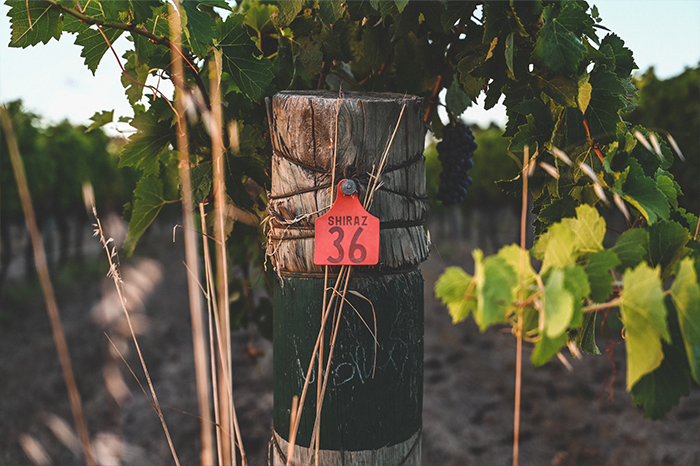
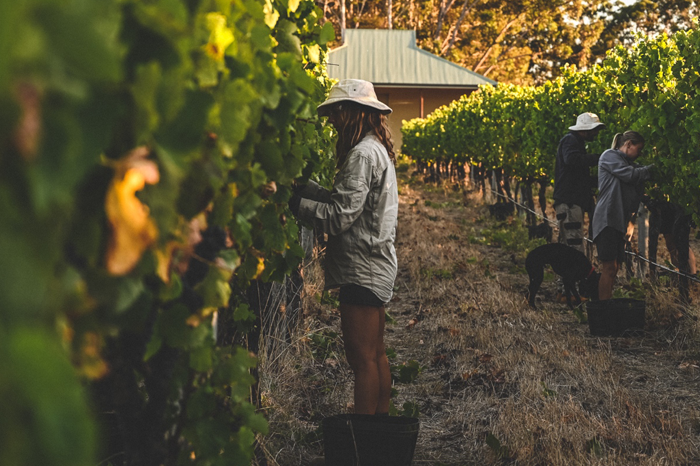
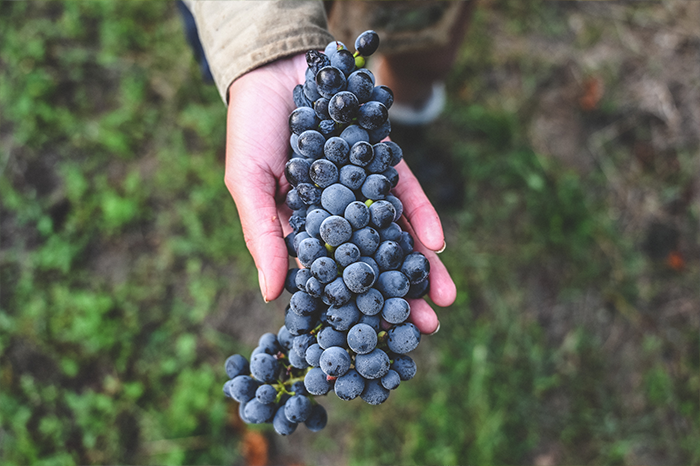
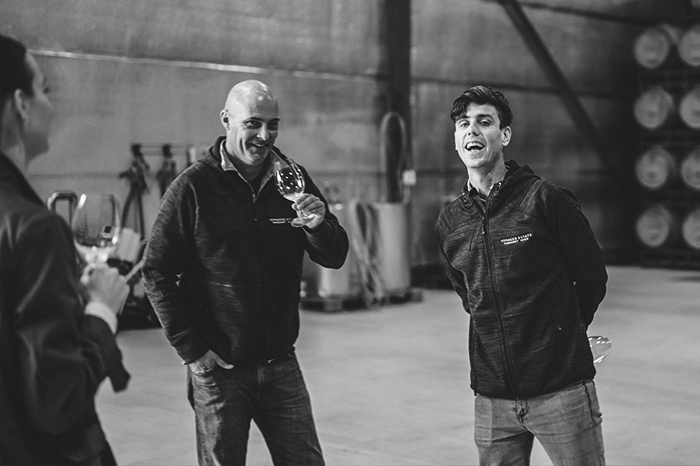
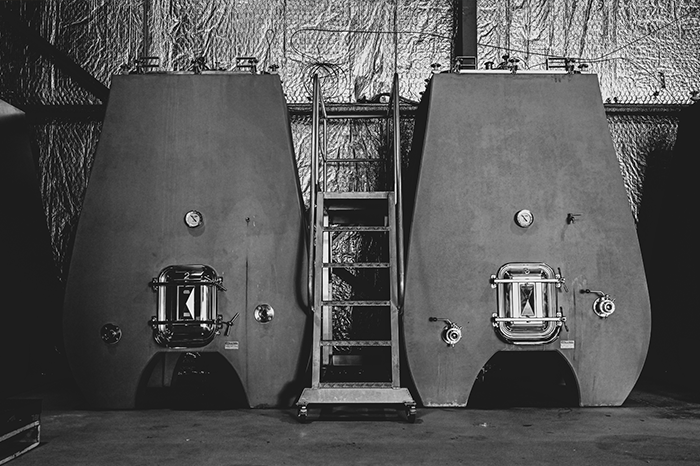
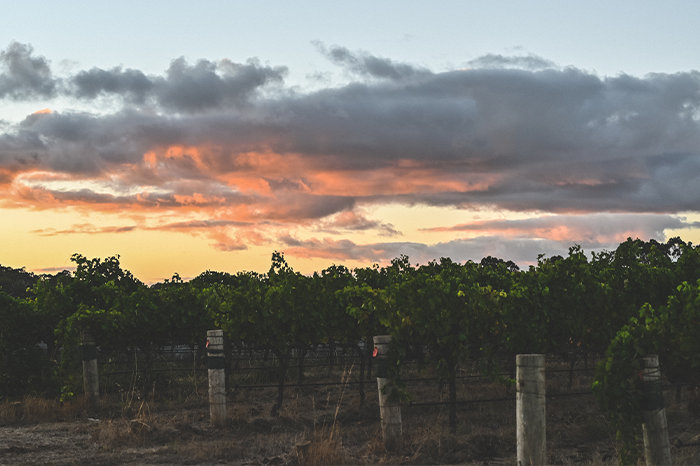
SOLI
As we pass the winter solstice and seasonal showers roll across our region, the vineyard begins its slow process of regeneration. The vines lay dormant, and we embrace the crisp vitality of winter – colder days, punctuated with storm fronts that whip in from the ocean. This is the most important season for building fertile soil – the vineyard’s lifeblood.
Our Vineyard Team select the best canes and gently lay them down, pruning foliage as they go. In turn, cuttings are mulched and returned to the earth as organic matter, enriching the vineyard floor.
It’s a sustainable, interconnected cycle that ensures nothing is wasted, and one that inspires our SOLI [Latin: soil] menu from the ground up – heroing our organically farmed wines of place alongside the pristine produce gifted by our region’s ancient soils.
Featured on this menu is our Line-caught Fish, Scallop and Mussels – inspired by the roaring winter oceans that supply us with an abundance of fresh seafood at this time of year.
Line-caught fish, sourced from Busselton, is lightly salted and gently poached or steamed. Locally sourced mussels are cooked with peppercorn and kaffir lime, and then smoked. This pristine coastal produce is served alongside a chicken and lime sauce, scallop silk and a Chardonnay yuzu gel. The dish is finished with an array of coastal plants, including pickled Karkalla from the Voyager Garden.
This stunning dish is paired alongside our certified organic single vineyard Chardonnay, Broadvale Block 6. The wine displays delicate floral and flinty notes, with intense citrus and a lovely mouth-coating texture – perfectly amplified by the ‘savours’ of yuzu, kaffir lime and our pickled Karkalla.
The chicken and lime sauce is deliciously umami and the line-caught fish and mussels, with their mineral notes and varying amounts of sweetness, serve to highlight the more structured side of the Chardonnay. The smoked mussel also brings through some of the wine’s lovely oak character.
Immerse yourself in the season of SOLI with a degustation experience this winter...
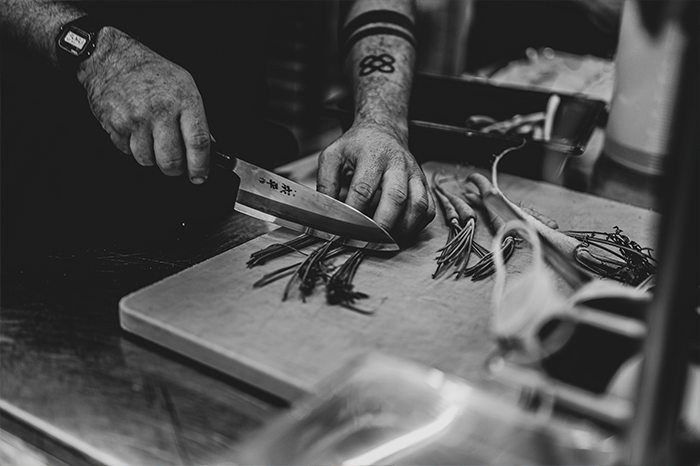
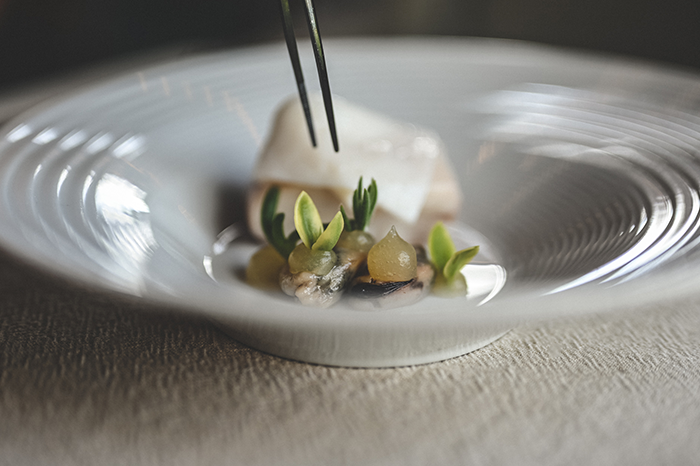
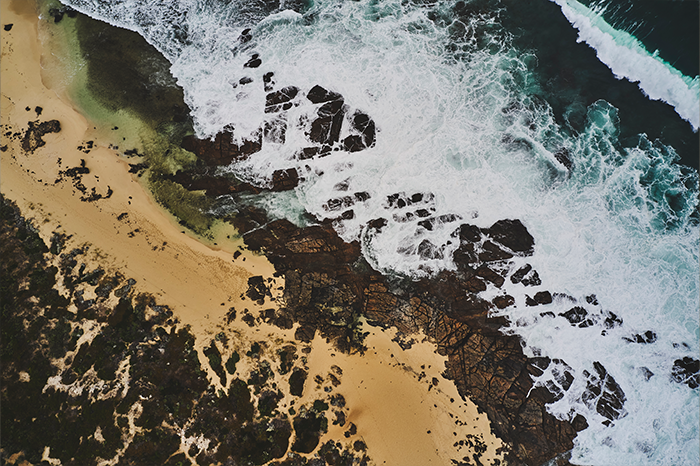
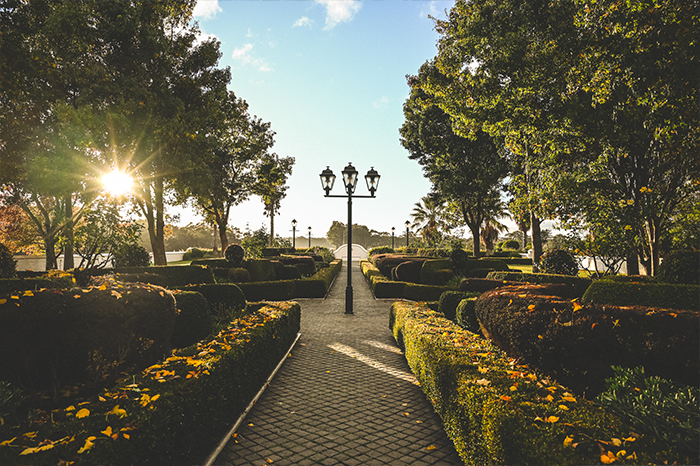
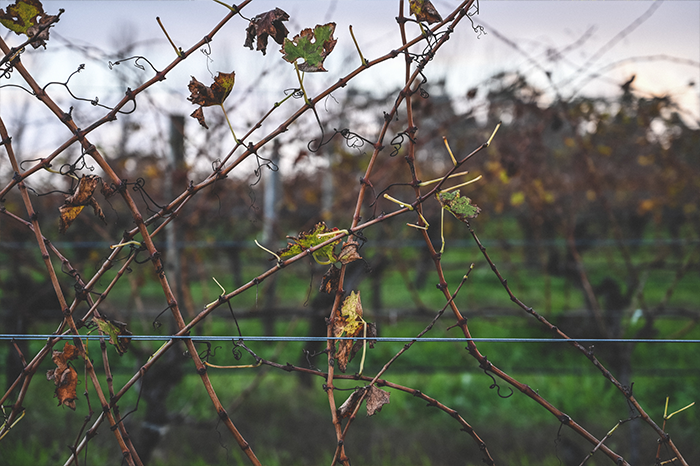
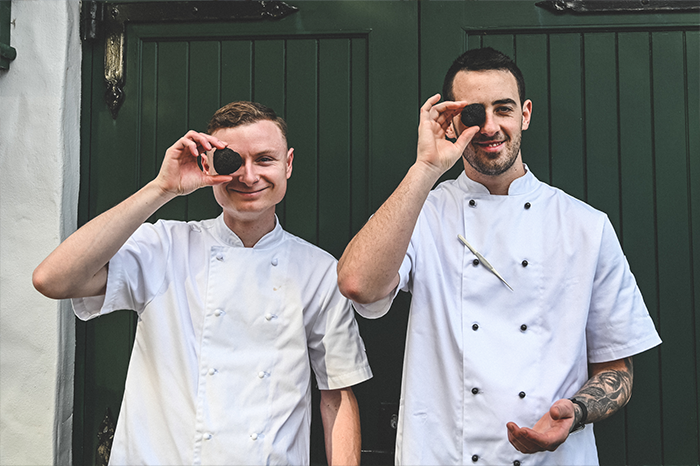
THE SEEDS OF CHANGE
This season, the market garden at the Landsmith Home Farm will be growing six crops to supply our celebrated Restaurant.
A relatively new project, the Landsmith Home Farm is a neighbouring property in Margaret River, which is being rehabilitated using the same green principles as our main Estate.
First to hit the soil are tomatoes, which were sown and put on the germination heat mat last week. The mat keeps the soil at a happy 21°C, providing heat-loving summer crops with the right temperature to germinate.
Together with the Restaurant Team, our green thumbs in the Garden have selected the variety Sunchocola Cherry Tomatoes, which are a beautiful, deep rich red colour and have a smokey yet sweet flavour. They are an F1 Hybrid, which have been bred to be well-adapted to field growing, as opposed to greenhouse protected conditions.
The Garden Team have also sown a few heirloom slicer tomatoes called Nicola's Yellows, which are large yellow tomatoes that have proven to grow very successfully in the past. The seed has come from a crop produced last season in Margaret River, meaning these particular tomatoes will be increasingly well-adapted to our local conditions.
The Garden Team will be potting the seedlings in a few weeks' time to ensure strong and healthy plants, and they will be transplanted in-ground come early October.
Cultivating and supplying our own fresh produce marks a new and exciting chapter at Voyager Estate, which will see our Culinary Team become progressively more sustainable. From small beginnings, big things grow...
THE BIG EGG
We look down the list of things we get excited about, and the word “concrete” isn’t usually on it. That is, unless you’re a winemaker.
Wander through our winery and you may catch a glimpse of a large grey egg or an Eiffel-shaped concrete vessel – rather industrial looking structures, sitting pretty in a sea of traditional open fermenters and barrels. Concrete may seem like the last place we’d want to put our grapes. So, why do we use it?
The secret is in both the conical shape and porous nature of the material. The 'oval' shape of these concrete vessels holds the grape skins down lower when they’re fermenting, so less pumping is needed to extract the tannin. It’s a gentler process, that leads to a softer texture in the wine. Add to that, the tiny holes in concrete allow oxygen into the juice without imparting any oak flavour or tannin, so the aromatics and fruit purity in the resulting wine really shine.
This year, Travis, Jimmy and our winemaking team had enough fruit yield from our V9 Cabernet block for a little experiment. They fermented some of the grapes in a concrete Eiffel and some in stainless steel open fermenters. All other factors in the process were the same – same fruit, same day, same additions, same barrel-ageing.
“Whilst both the resulting wines were of very high quality, what we discovered was the wine in concrete had a softer texture and incredible vibrancy – it really jumped out of the glass and was a more complete wine earlier in the process. We realised just how impactful oxygenation is in the fermentation stage, not just when the wine is ageing" says Jimmy.
This opportunity for innovation has not only provided new insight but has big implications for Voyager's mission to create a sustainable legacy. Oak barrels serve their intended purpose (imparting flavour and texture into the wine) for a limited time before they are retired. By comparison, a concrete egg or Eiffel will probably outlive us all, offering way more mileage!
A solution that allows us to reduce our reliance on a finite natural resource and move to a more sustainable material is very significant, as we look to reduce our carbon footprint. This important work is continuing, as we introduce more concrete vessels into the winery, and the team experiment further with the material to create exciting and nuanced Voyager wines.
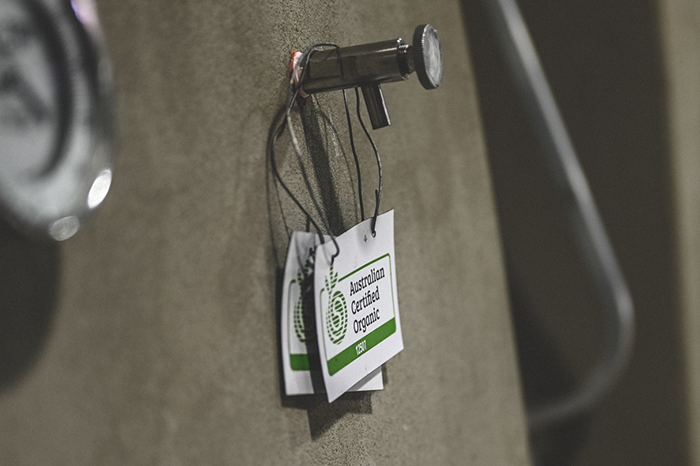
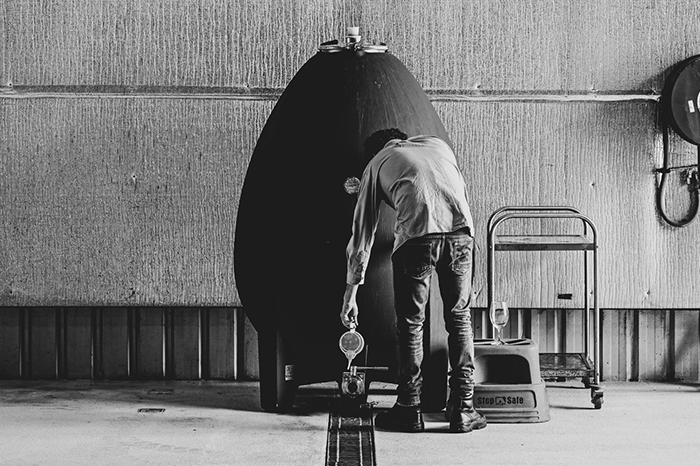
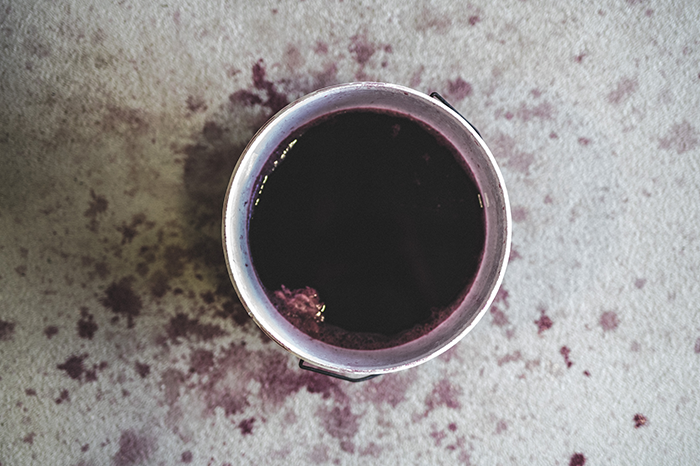
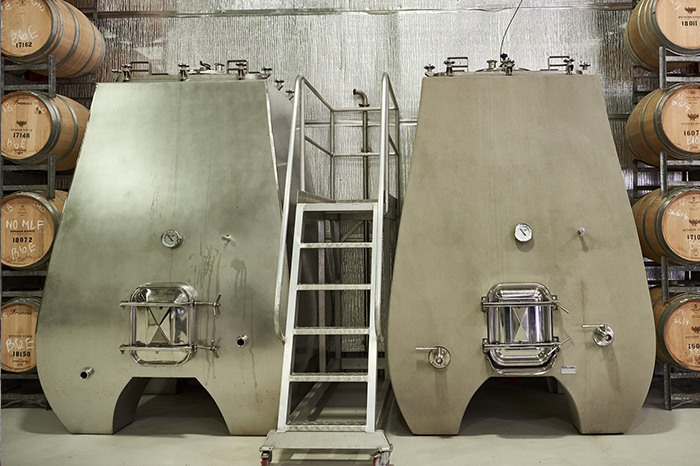
RIVER REVEGETATION
Recently the Voyager team joined a 60 strong group of local volunteers for the Margaret River Wine Industry Community Revegetation Day.
Organised by the Margaret River Wine Association (MRWA), a cohort of green thumbs from our wonderful region gathered to help restore and protect the flora of the Margaret River river mouth. Even with the threat of a potential 25mm downpour, the opportunity to get out of the winery or office, and spend a morning down at the beautiful river mouth enjoying Combi Coffee and a sausage sizzle donated by IGA proved to be too good to pass up.
After a Welcome to Country by Wadandi cultural custodian, Zac Webb, a briefing followed from Nature Conservation General Manager, Drew McKenzie. Once everyone was advised of what was to be achieved, they were off!
The volunteers began by focussing on the degraded areas at the river mouth and around the carpark with weed removal and planting to assist with dune stabilisation. Thankfully, the 'weather gods' were kind and waited for the last pig face to be planted and the final sausage to be consumed, before the heavens opened up and watered in all that had been planted! MRWA CEO, Amanda Whiteland, finished the day by saying “Given it is our wine region's namesake, and Margaret River (Wooditjup Bilya) has significant cultural, marine and biodiversity values, it made sense to do something that connected to the River." We couldn't agree more.
We are proud to say that this initiative was made possible partly through the MRWA's application to the Voyager Estate Community Grants program, which went towards tube stock and materials for the day.
The event created great community pride and team building across the wine industry for our world-renowned namesake. A big thank you to MRWA and Nature Conservation Margaret River for organising such a fantastic initiative, that is helping to preserve our incredible coastal home for generations to come!
